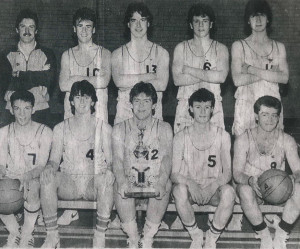Is Your Team Busy or Effective? The Hidden Cost of Unfocused Sales Activity
Is Your Team Busy or Effective – assessing your sales team performance?
If you’re a sales leader, director, or business owner, you’ve likely asked yourself this question more than once. The office (or CRM) might be buzzing with activity, calls are being made, meetings are booked, and everyone looks busy. But when it comes time to review pipeline health, deal progression, or revenue impact, the results just don’t match the noise.
In the past I have had a couple of clients that would have observed people on the phone as “Busy!” and those people sitting at their computer, typing or perish the thought, thinking as “Lazy!”
(Old school, maybe – judgemental, 100% – accurate, definitely not.)
This is the hidden cost of unfocused sales activity — a team doing a lot, but achieving too little.
Busy vs Effective: What’s the Difference and how can you impact sales team performance?
Busy is reactive. It’s logging calls, chasing dead leads, attending unqualified meetings, and saying yes to every request. It’s saying, “I’ve done my bit,” even if it didn’t move anything forward.
Effective is strategic. It’s working a plan, prioritising high-value prospects, qualifying hard, and advancing deals with intent. It’s knowing what your effort is supposed to produce — and adjusting when it doesn’t.
Being busy gives the illusion of productivity. Being effective delivers results.
The Red Flags of Busyness Culture
– Deals sitting in the same stage for weeks
– Reps spending hours on admin instead of prospecting
– Lack of clarity around ICP (Ideal Customer Profile)
– Too many meetings, too few outcomes
– Weekly reports full of metrics but empty of insights
– Reps “filling time” instead of building pipeline
You don’t fix busyness with more pressure. You fix it by aligning action with intention.
How to Shift from Busy to Effective
- Clarify the Mission
Does your team understand the why behind their activity? Is the sales strategy clearly defined and aligned to your ideal customers? Ambiguity creates busywork. Clarity fuels performance. - Define What Good Looks Like
What are the non-negotiable sales behaviours that lead to pipeline progression? Map them out. Track them. Coach to them. For example: high-quality discovery, advancing the next step, objection handling. - Measure Leading Indicators
Instead of just counting calls or emails, track meaningful actions: qualified discovery calls, demos booked with decision-makers, referrals generated, proposals submitted. Activities that correlate with outcomes. - Coach for Impact, Not Just Activity
Are your 1:1s focused on numbers or behaviours? Shift the focus to how work is being done, not just how much. Use specific examples to discuss mindset, planning, and execution. - Kill the Vanity Metrics
Ditch the obsession with being “always on” or having high call volumes. Volume is meaningless without velocity and conversion. If your team is chasing quantity, they’re probably avoiding quality.
(Measuring talk time – vanity or insanity – record it instead and listen to the quality. Quality is not measured by length.) - Create Structured Sales Rhythms
Introduce weekly planning, daily focus blocks, and structured pipeline reviews. Process isn’t restrictive — it’s freeing. It gives your team confidence and repeatability. - Audit the Sales Day
Ask your team to log where their time goes in a typical day or week. You’ll often find 30–40% of their time is swallowed by internal work, admin, or unproductive tasks. (What gets measured gets done.) - Reconnect to the Customer
Nothing refocuses effort faster than reconnecting with the actual buyer’s journey. Run joint calls, listen to recordings, shadow a few deals. Effective teams know their customer’s reality.
What This Means for Sales Leaders
Your role isn’t to make sure your team is busy. It’s to ensure they’re working in the right direction, with the right intensity, and the right intent – it’s your job to improve the sales team performance. That requires process, coaching, and leadership.
This is the hard one – especially for business owners who have built the business from the ground up and see slow pace as lazy or call volume as being effective.
Don’t reward activity. Reward progress. Ask better questions. Reinforce what good looks like. And when needed, call out the difference between effort and impact.
Let busy be someone else’s problem. Your job is to build effective.
When everyone, salespeople included, understand what really matters — and when leaders give them the tools and direction to pursue it — performance follows.
Not just more activity, but better outcomes. (think about doing deep work…?)
A key element to this is coaching – would be glad to help if you think there is a need. Email paul@shift-control.co.uk
Thanks for reading







